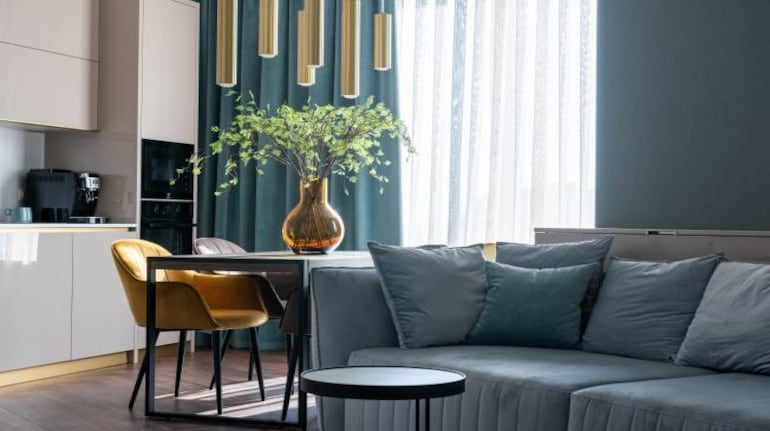
Demand for mid-range and premium homes remains high with 59 percent of homebuyers favouring units in the range of Rs 45 lakh to Rs 1.5 crore, the ANAROCK Consumer Sentiment Survey (H1 2023) has shown.
The survey found that homes priced in the range of Rs 45-90 lakh are most favoured (by 35 percent of respondents) followed by 24 percent of the respondents who prefer homes priced between Rs 90 lakh to Rs 1.5 crore. This is a 10 percent sentiment increase for homes in this budget category over the survey's H1 2020 edition.
As many as 5,218 participants were surveyed across Bengaluru, Chennai, Pune, Delhi-NCR, Kolkata, MMR and Hyderabad.
Affordable housing preference was down to 25 percent in H1 2023 (from 40 percent in H2 2020 survey). According to the survey, the demand for 3 BHKs over other units remained high in the post-pandemic market with 48 percent of the respondents opting for this configuration in the current survey (up from 41 percent in the H12022 survey). The highest demand for 3 BHKs was recorded in Bengaluru, Chennai, Pune and Delhi-NCR, while Kolkata, MMR and Hyderabad witnessed higher demand for 2 BHKs, the survey showed.
"Demand for bigger homes remains undeterred, with 3 BHKs once again superseding 2 BHKs in the current survey. Around 48 percent of property seekers prefer 3 BHKs over other configurations, while 39 percent still prefer 2 BHK units. Compared with the H12022 survey, demand for 3 BHKs has been rising steadily – from approximately 41 percent in H12022 to approximately 48 percent in H12023. Bigger homes remain the top pick despite life returning to normal after the pandemic,” said Anuj Puri, Chairman - ANAROCK Group.
"A key reason for this shift is the increased new supply by large and listed developers," said Puri. "These established players command much higher confidence among prospective homebuyers due to their reputation for timely project delivery."
The survey also highlights a noticeable demand shift between ready properties and new launches across different cities. As of H12023, the demand ratio of ready homes to new launches stands at 28:27, denoting a significant gap reduction compared to H12020, when the ratio was 46:18.
High inflation has impacted the disposable incomes of over 66 percent of the respondents in the H12023 survey compared to 61 percent in the H12022 survey, indicating an increased financial strain on individuals and households. Persistent inflationary trends globally and in India since the onset of the pandemic and the Russia-Ukraine war have directly impacted disposable incomes. The impact is yet to reflect in housing sales across cities; however, any further increase will impact residential sales growth.
Likewise, any further home loan rate hikes - particularly if interest rates breach the 9.5 percent mark will have a ‘high impact’ on residential sales, according to 98 percent of survey respondents.
As for demand for affordable housing, the survey indicates that it has shrunk further to just 25 percent in the current edition. Demand for sub-Rs 40 lakh homes has seen a sharp decline to 25 percent in H12023 1from 28 percent in H12022, and 40 percent in H22020. Inflation and economic slowdown have hit this target audience hardest, leading to a cautious ‘wait-and-watch’ approach, the survey said.
It also found that 52 percent of the millennials and 35 percent of Gen-X respondents will use their investment gains from other asset classes to buy homes in the future.
End-users continue to dominate housing sentiment with 67 percent of the participants intending to buy properties for self-use, which is an expected trend as homeownership provides security in an uncertain economic climate.
Demand for peripheral areas shrunk with only 39 percent of the respondents preferring homes in the peripheries in H12023 in contrast to 45 percent in the H12021 survey. Of the respondents opting for peripheral locations, at least 61 percent of them are investors, while 39 percent are end users.
Discover the latest business news, Sensex, and Nifty updates. Obtain Personal Finance insights, tax queries, and expert opinions on Moneycontrol or download the Moneycontrol App to stay updated!